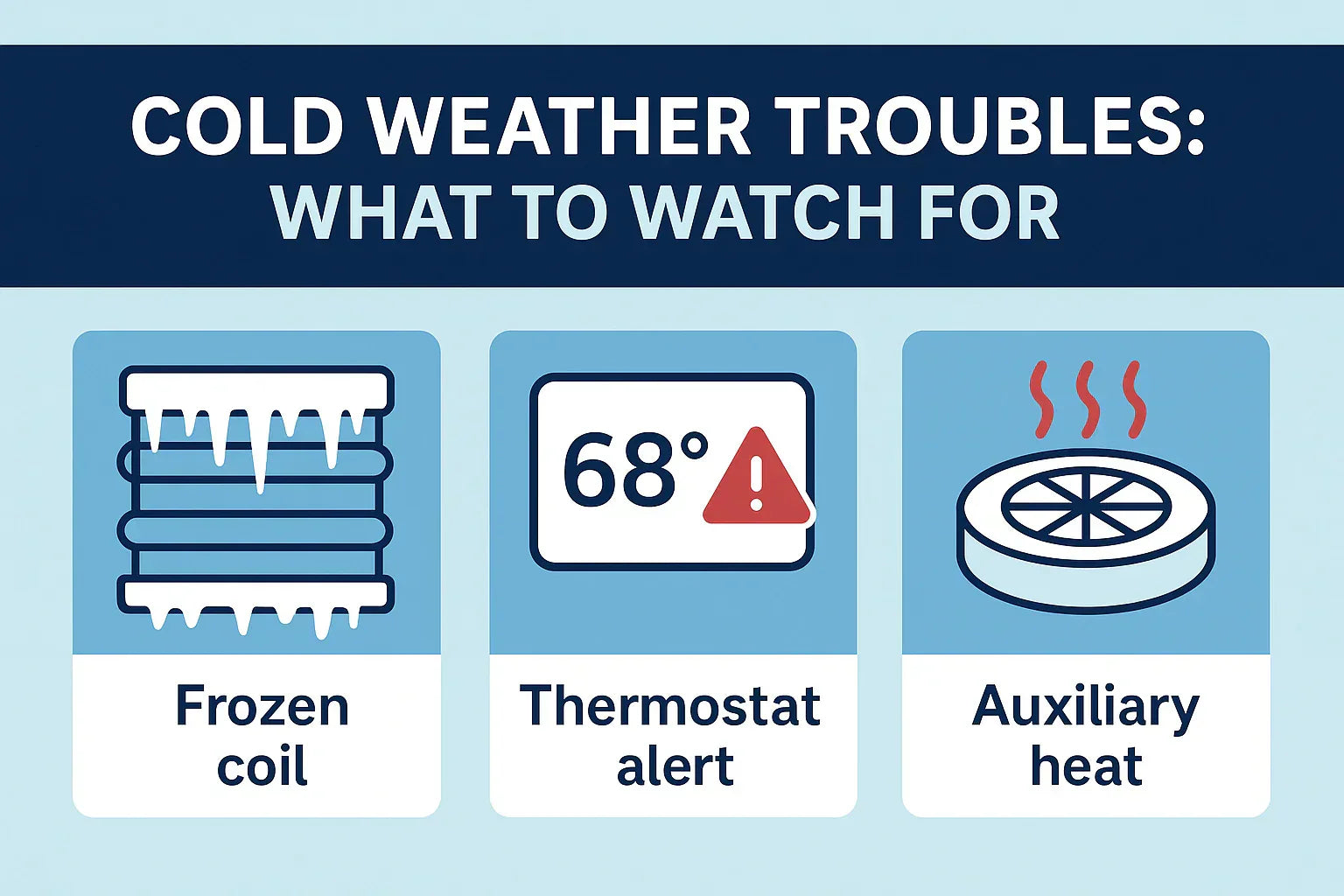Hi, I’m Alex Lane — your Home Comfort Advocate.
Today’s cold climate heat pumps aren’t just energy-efficient — they’re smart. And if you live in a region where winter doesn’t play around, the ability to remotely monitor and troubleshoot your system isn’t just a luxury — it’s a game-changer.
In this guide, I’ll walk you through how remote monitoring works, what tools you need, which issues you can catch early, and when it’s time to call in the pros. Because the key to comfort and efficiency in freezing temps is staying ahead of problems — not reacting to them.
Why Remote Monitoring Matters in Cold Climates
When your home’s primary heat source is facing sub-zero temperatures, every performance hiccup matters. A few hours of lost heating in -10°F weather isn’t just inconvenient — it can put your pipes, comfort, and safety at risk.
With remote monitoring, you can:
-
Track temperature and humidity trends
-
Catch early warning signs like short cycling or coil freeze-ups
-
Monitor energy consumption and system efficiency
-
Stay informed with real-time alerts — even while you’re away
It’s proactive HVAC care, built for the realities of cold climates.
Smart Thermostats: The Heart of Remote Control
Most remote monitoring starts with a smart thermostat. These devices do more than adjust temperature — they’re the communication bridge between you and your heat pump.
Top Features to Look For:
-
Wi-Fi connectivity for remote access via app
-
Energy usage reports to spot trends
-
Learning algorithms to adapt to your schedule
-
Cold climate compatibility, including dual-fuel logic
Popular models like the Ecobee Smart Thermostat Premium and Google Nest Learning Thermostat are widely used with heat pump setups and offer integration with humidity sensors and outdoor temperature data.
Want help choosing one? ENERGY STAR maintains a searchable list of certified smart thermostats — including models compatible with heat pumps, zoned systems, and even utility rebates:
👉 ENERGY STAR Certified Connected Thermostats Product Finder
Monitoring Through the Manufacturer’s App
Most high-end heat pumps now come with branded apps for system diagnostics and performance tracking. These apps can provide insights your thermostat can’t, including:
-
Coil temperatures
-
Compressor performance
-
Error code reporting
-
Defrost cycle tracking
Top brands offering this level of access include:
-
Mitsubishi Kumo Cloud
-
Daikin One+
-
Lennox iComfort®
-
Carrier Infinity®
📘 Mitsubishi Electric Kumo Cloud Guide
📘 Carrier Infinity System Control
Pro tip: Some apps also support multi-zone monitoring — perfect for larger homes or ductless installations with several indoor units.
Remote Troubleshooting: What You Can Catch Early
When you understand how to interpret the data from your smart system, you can troubleshoot minor issues long before they cause a breakdown.
Common Red Flags to Watch For:
-
Sudden spike in energy use = possible refrigerant issue or ice buildup
-
Short cycling (rapid on/off) = could indicate incorrect sizing or a sensor problem
-
Unusual noise alerts = fan obstruction or compressor vibration
-
Outdoor unit not defrosting properly = airflow blockage or sensor failure
Curious how these systems perform when temps plunge well below zero?
👉 Are Heat Pumps Safe to Use in Extreme Cold? What the Data Says
Best Practices for Setting Up Remote Access
Here’s how to ensure your monitoring setup actually helps when it matters most:
✅ Connect to a Stable Network
Your thermostat and HVAC app rely on solid Wi-Fi. Use a mesh system or extender if needed — especially if your indoor air handler or outdoor unit is far from the router.
✅ Enable Notifications
Customize alerts for temperature drops, runtime spikes, or humidity anomalies. Make sure your app isn’t buried in your phone’s “Do Not Disturb” settings.
✅ Schedule Regular Check-ins
Don’t just wait for alerts. Take 5 minutes weekly to review your dashboard and note any unusual patterns.
When to Call the Pros
Remote monitoring helps you identify issues — but not necessarily fix them. Here’s when to escalate:
-
Consistent error codes (check the system manual for meanings)
-
Ice buildup that doesn’t resolve with defrost mode
-
Persistent short cycling
-
System not maintaining temperature for extended periods
📘 Carrier: Heat Pump Troubleshooting Guide
And don’t forget: keeping your installer in the loop can help you maintain warranty coverage — especially if they’re part of the monitoring service.
What to Expect From Your HVAC Pro
Many modern contractors now offer remote diagnostics as part of their service package. If your system is compatible, they may be able to:
-
Log in to your system remotely
-
Run tests or adjust settings
-
Identify issues before they become major
Some even offer annual maintenance plans with remote support built in.
📘 CoolAutomation: 11 Things You Should Know About HVAC Monitoring
Final Thoughts from Alex Lane
Cold weather doesn’t forgive HVAC mistakes. The more visibility you have into your heat pump’s performance, the better you can protect your comfort — and your energy budget.
By combining a quality smart thermostat, manufacturer’s app, and some weekly attention, you’ll be ahead of 90% of homeowners when it comes to preventing breakdowns and maximizing efficiency.
Remote HVAC care isn’t just about convenience — it’s about peace of mind in a snowstorm.
Want to see all your options for the best-performing models? Don’t miss this guide:
👉 Best Heat Pumps for Cold Climates in 2025
Alex Lane
Your Home Comfort Advocate







